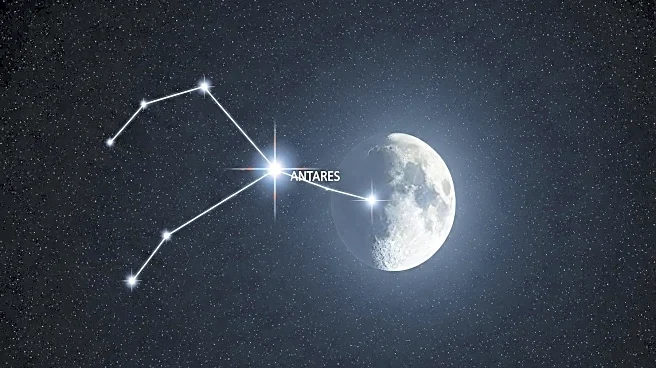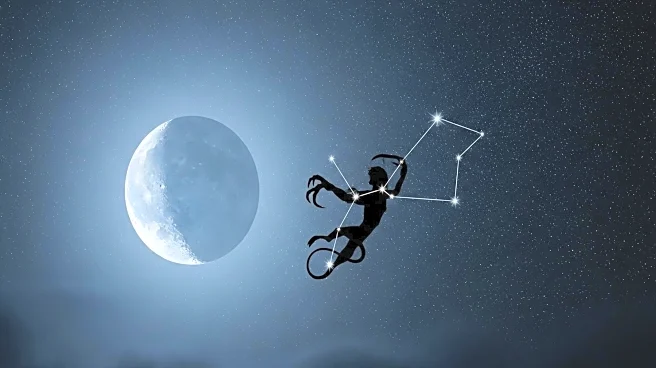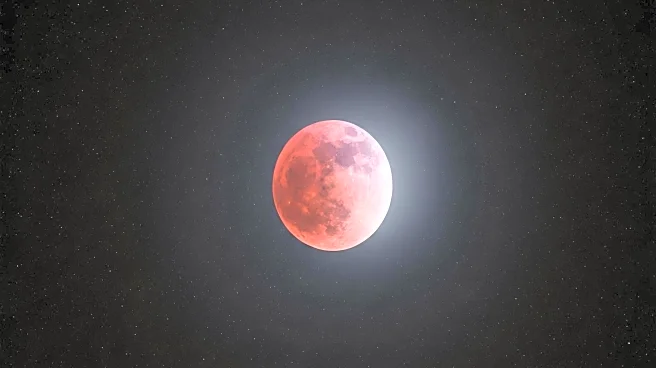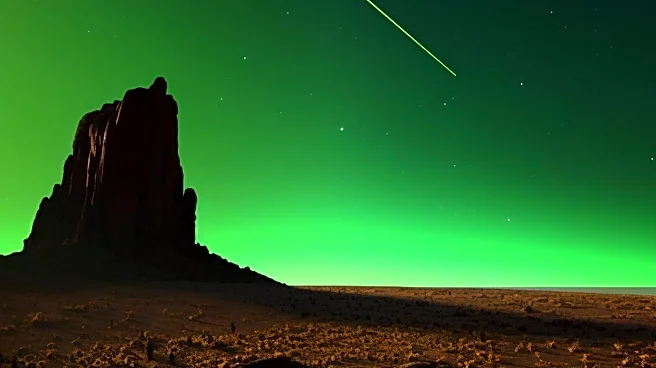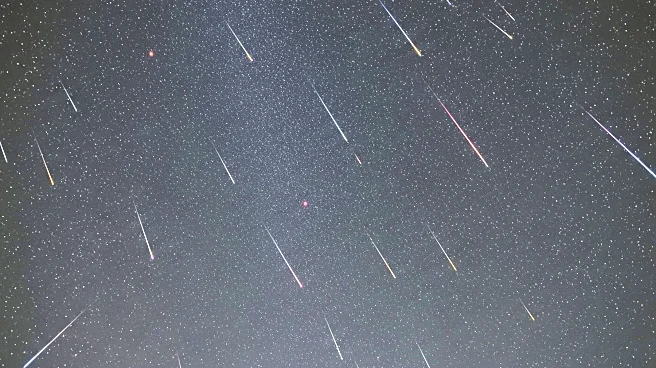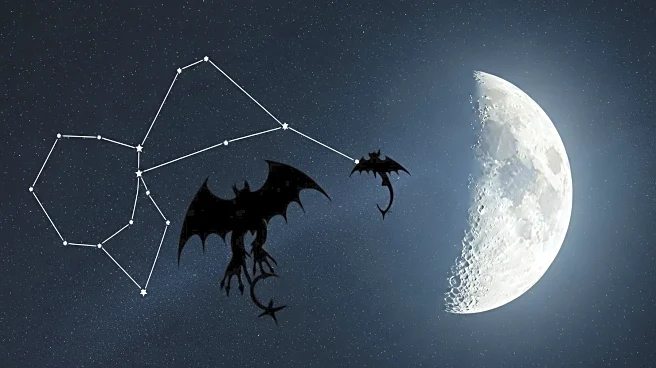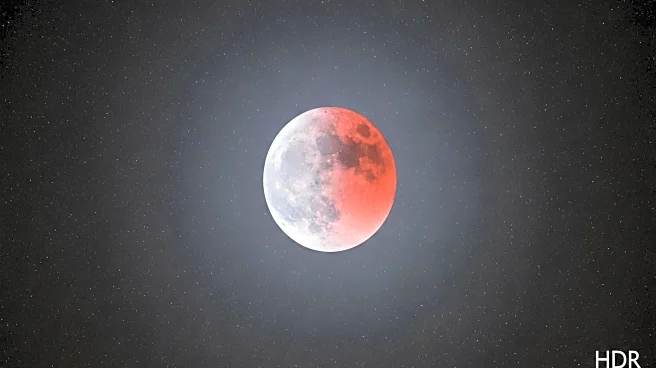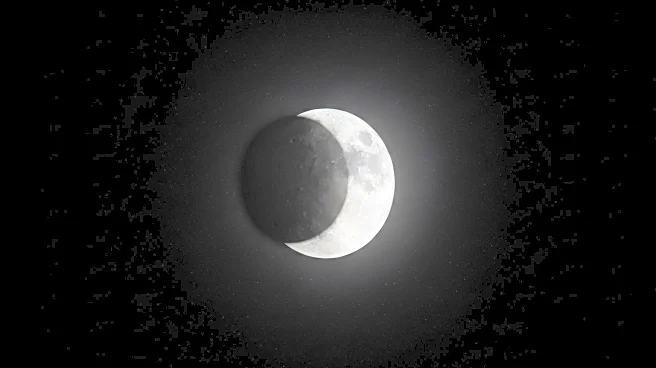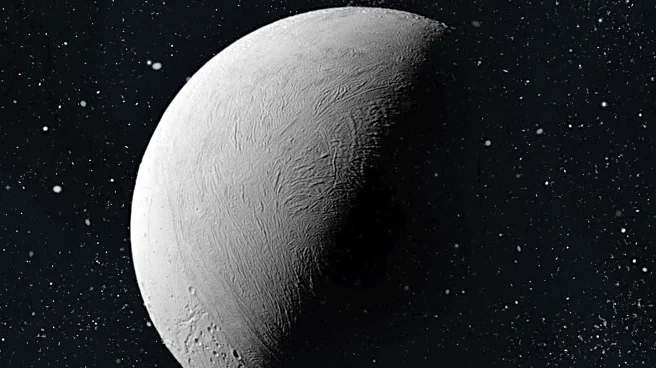What's Happening?
On August 30, the first quarter moon will be visible in the night sky, appearing close to the red supergiant star Antares in the Scorpius constellation. The moon will be half-lit, with the right side illuminated by sunlight. This celestial event will be best observed at sunset, with the moon positioned less than 20 degrees above the southwestern horizon. The moon will set approximately three hours after sunset, providing a limited window for viewing.
Why It's Important?
The appearance of the first quarter moon near Antares offers a unique opportunity for stargazers and astronomy enthusiasts to observe a striking celestial alignment. This event highlights the dynamic nature of the night sky and encourages public interest in astronomy. It also serves as a precursor to the upcoming full moon and total lunar eclipse on September 7, which will transform the moon into a blood moon. Such events can inspire educational activities and community gatherings centered around astronomy.
What's Next?
Following the first quarter moon, the next significant lunar event will be the full moon on September 7, coinciding with a total lunar eclipse. This will not be visible from North America but will be observable in other parts of the world. Astronomy enthusiasts in the U.S. may prepare for future celestial events, including the next total lunar eclipse visible in the U.S. on March 2-3, 2026. These events can foster increased interest in astronomy and related educational programs.
